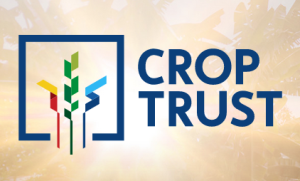December saw the publication of a special, open access issue of Forest Ecology and Management on “Global Forest Genetic Resources: Taking Stock.” Ian Dawson, one of the editors, has blogged chez nous about a couple of the papers. Here is the full table of contents, with links to both the papers and Ian’s posts.
Loo J, Souvannavong O, Dawson IK (2014) Seeing the trees as well as the forest: the importance of managing forest genetic resources. Forest Ecology and Management, 333, 1-8.
http://dx.doi.org/10.1016/j.foreco.2014.08.014
Dawson IK, Leakey R, Clement CR, Weber JC, Cornelius JP, Roshetko JM, Vinceti B, Kalinganire A, Tchoundjeu Z, Masters E, Jamnadass R (2014) The management of tree genetic resources and the livelihoods of rural communities in the tropics: non-timber forest products, smallholder agroforestry practices and tree commodity crops. Forest Ecology and Management, 333, 9-21.
http://dx.doi.org/10.1016/j.foreco.2014.01.021
Koskela J, Vinceti B, Dvorak W, Bush D, Dawson IK, Loo J, Kjaer ED, Navarro C, Padolina C, Bordács S, Jamnadass R, Graudal L, Ramamonjisoa L (2014) Utilization and transfer of forest genetic resources: a global review. Forest Ecology and Management, 333, 22-34.
http://dx.doi.org/10.1016/j.foreco.2014.07.017
Graudal L, Aravanopoulos F, Bennadji Z, Changtragoon S, Fady B, Kjær ED, Loo J, Ramamonjisoa L, Vendramin GG (2014) Global to local genetic diversity indicators of evolutionary potential in tree species within and outside forests. Forest Ecology and Management, 333, 35-51.
http://dx.doi.org/10.1016/j.foreco.2014.05.002
Wickneswari R, Rajora OP, Finkeldey R, Aravanopoulos F, Bouvet J-M, Vaillancourt RE, Kanashiro M, Fady B, Tomita M, Vinson C (2014) Genetic effects of forest management practices: global synthesis and perspectives. Forest Ecology and Management, 333, 52-65.
http://dx.doi.org/10.1016/j.foreco.2014.06.008
Thomas E, Jalonen R, Loo J, Boshier D, Gallo L, Cavers S, Bordács S, Smith P, Bozzano M (2014) Genetic considerations in ecosystem restoration using native tree species. Forest Ecology and Management, 333, 66-75.
http://dx.doi.org/10.1016/j.foreco.2014.07.015
Alfaro RI, Fady B, Vendramin GG, Dawson IK, Fleming RA, Sáenz-Romero C, Lindig-Cisneros RA, Murdock T, Vinceti B, Navarro CM, Skrøppa T, Baldinelli G, El-Kassaby YA, Loo J (2014) The role of forest genetic resources in responding to biotic and abiotic factors in the context of anthropogenic climate change. Forest Ecology and Management, 333, 76-87.
http://dx.doi.org/10.1016/j.foreco.2014.04.006
Pritchard HW, Moat JF, Ferraz JBS, Marks TR, Camargo JLC, Nadarajan J, Ferraz IDK (2014) Innovative approaches to the preservation of forest trees. Forest Ecology and Management, 333, 88-98.
http://dx.doi.org/10.1016/j.foreco.2014.08.012
I wonder how many of the recently-published top 20 research questions on forestry and landscapes we can now tick off.
